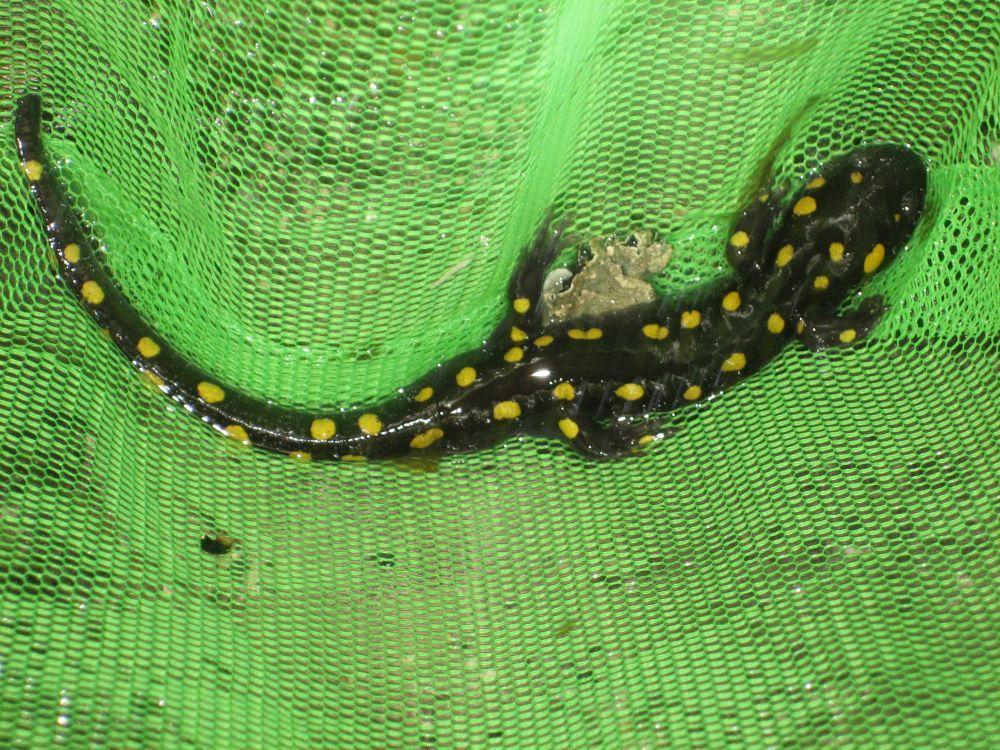Springtime resurrection begins with the arrival of eggs
- Tags:
- Wildlife
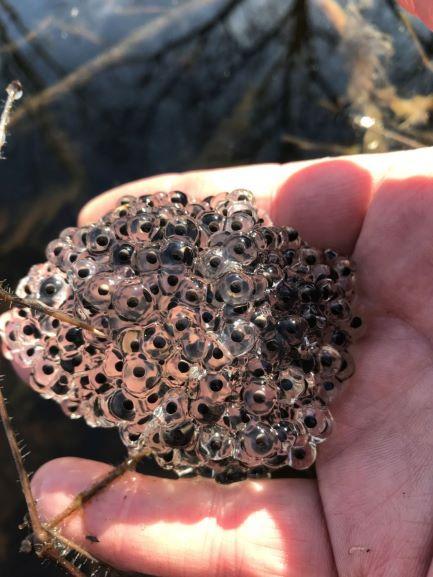
Jelly-like wood frog eggs masses float on the surface to rise and fall with changing water levels.
Eggs are a perennial symbol of Easter and Passover. No coincidence. The season of rebirth begins with breeding seasons and eggs containing the embryonic continuance of life. Mornings and evenings are now punctuated by the mating chorus of early breeding birds, and with recent rains, the first wood frog chorus from temporary vernal pools
Early birds – robins, redwing blackbirds, phoebes, woodcocks – are arriving weekly. I am watching a pair of chickadees bringing beak-loads of grass and downy feathers to a cavity in a small apple tree where they are now lining their nest. Familiar winter feeder birds – titmice, nuthatches, chickadees – all nest early inside hollow tree cavities for shelter in chilly April.
Birds’ songs and aerial courtship displays have evolved to attract mates and begin the nesting season. Early birds will be joined by millions colorful tropical migrants arriving in May – tanagers, orioles, vireos, thrushes, warblers – will take advantage of a bonanza of insect protein in forests, farmlands and backyards. Blackfly season provides nesting season food worth the hazards of a long migration from the tropics to northern latitudes.
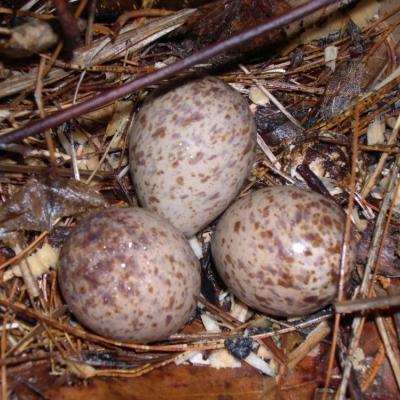
The American woodcock is a ground-nesting gamebird that typically arrives in March. Male woodcocks perform an elaborate courtship display in April at the edges of open fields and brushy areas. Their nasal evening “peent” calls are followed by a rising, looping circular flight designed to draw female woodcocks nearer to their dance floor. After mating, cryptic brown camouflage protects females nesting on the ground in woodlands located adjacent to open fields and wetlands. Their long bills are adapted to probing for earthworms in wet areas. Alder swales are the perfect woodcock habitat.
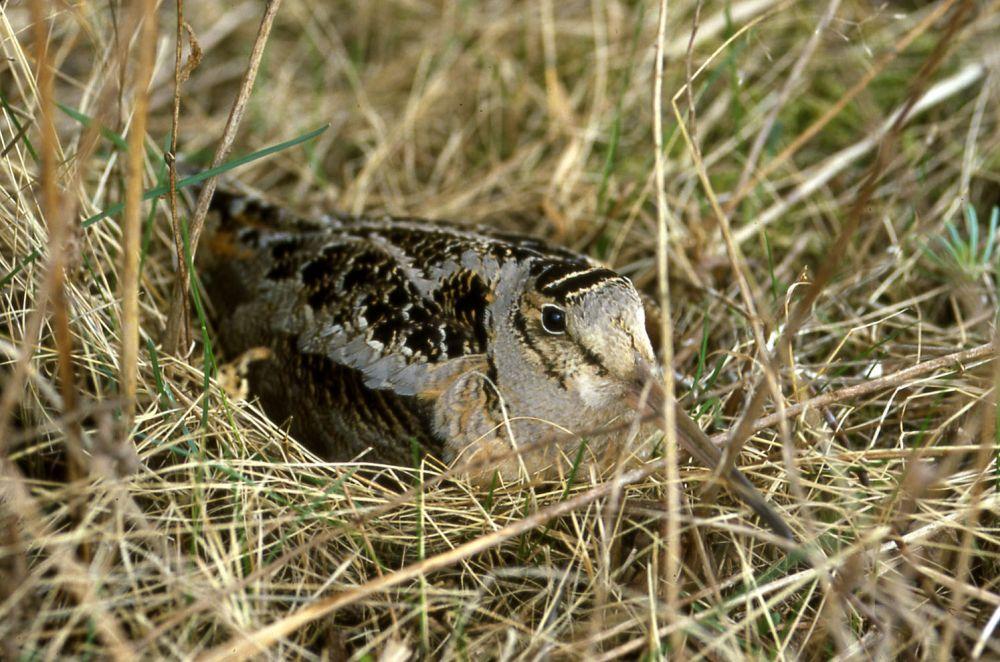
Different chick-rearing strategies
Woodcock eggs are camouflaged splotchy tan and brown. Woodcock chicks – like those of ruffed grouse, turkeys, waterfowl and domestic fowl – are precocious. Chicks are born fully feathered in fuzzy down, with eyes open and ready to leave the nest to walk or run on tiny legs following mother hens to forage immediately after their hatching. Once the brood of chicks leaves the nest - within hours after synchronized hatching, they don’t return. Their nests are for eggs, not for rearing chicks.
The familiar forest songbirds nesting in trees or on built structures, as robins often do, brood chicks hatched from bright blue eggs. Songbird chicks are “altricial.” They hatch helpless, naked and pink with purple eyelids closed. Chicks require the brooding care and feeding in the nest by attentive parents as early pinfeathers develop. Nestlings take weeks before flight from their natal nest when they are officially fledglings entering the perilous first few months outside the egg.
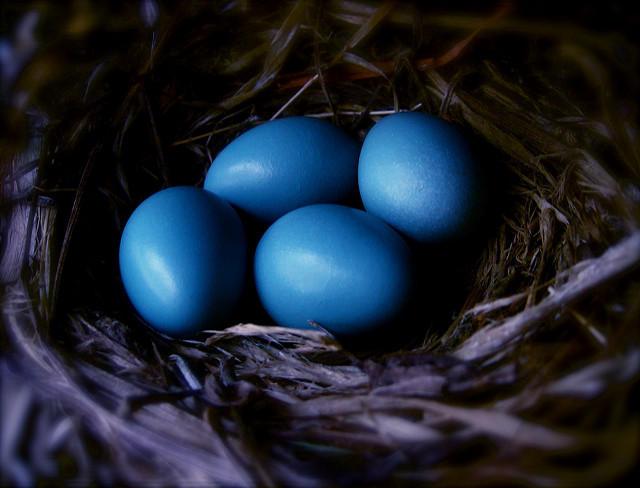
While both precocious and altricial birds incubate their eggs, once eggs hatch, the differences are apparent. The two radically different developmental strategies are evolutionary adaptations to changing environments. Conditions may favor one or the other in a given year depending on the weather. Early nesting is a gamble against fickle April weather. A longer first summer of feeding allows larger precocious chicks to grow larger before fall migration or their first winter. Altricial chicks require more care yet many of these bird families raise two broods in a single spring and summer.
Different egg laying strategies
The other April Easter eggs are amphibious. Wood frogs and spotted salamanders are forest species not so well known. These two species are “obligate” to breeding in the fishless, temporary vernal pools that typically dry up before late June or earlier.
Vocal wood frogs and silent spotted salamanders migrate to vernal pools during the first heavy rains in early April. Vocalizations from a chorus of male wood frogs sounds like quacking ducks.
The sound of spring peepers in wetlands is the best proxy to know the timing of the salamander and wood frog migration and breeding. The salamanders are striking: large, black with bright yellow spots. They live underground for most of the year except during their vernal pool migration.
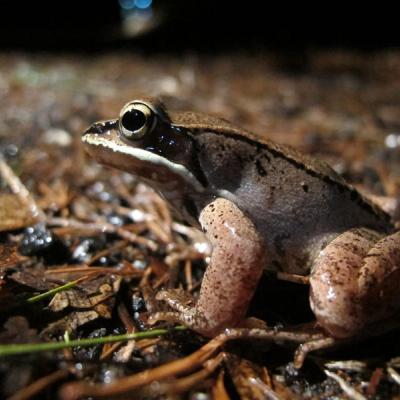
New Hampshire amphibian fans refer to the first heavy April rain as “The Big Night” when overnight temperatures remain above 42 degrees for amphibians migration. Adults return to the same vernal pool in which they hatched or where they first successfully bred. I make an analogy to a college Homecoming Weekend. Spotted salamanders walk as far as 200 meters from forest to pool. Wood frogs hop even further, as much as a quarter mile.
The two amphibians employ differing egg laying strategies. Cold mornings negatively impact migration and egg survival. Spotted salamanders eggs are thicker-walled and attached to sticks or vegetation, well submerged in pools. Jelly-like wood frog eggs masses float on the surface to rise and fall with changing water levels. If ice forms on the surface, frog embryos at the surface may be killed while salamander eggs are insulated beneath the water. On the other hand, during a dry spring, water levels in a pool can fall by a foot or more stranding the salamander eggs dangling above the water while the wood frog eggs ‘ride the tide’ as water levels change. Each strategy has relative advantages or disadvantages in different spring weather regimes.
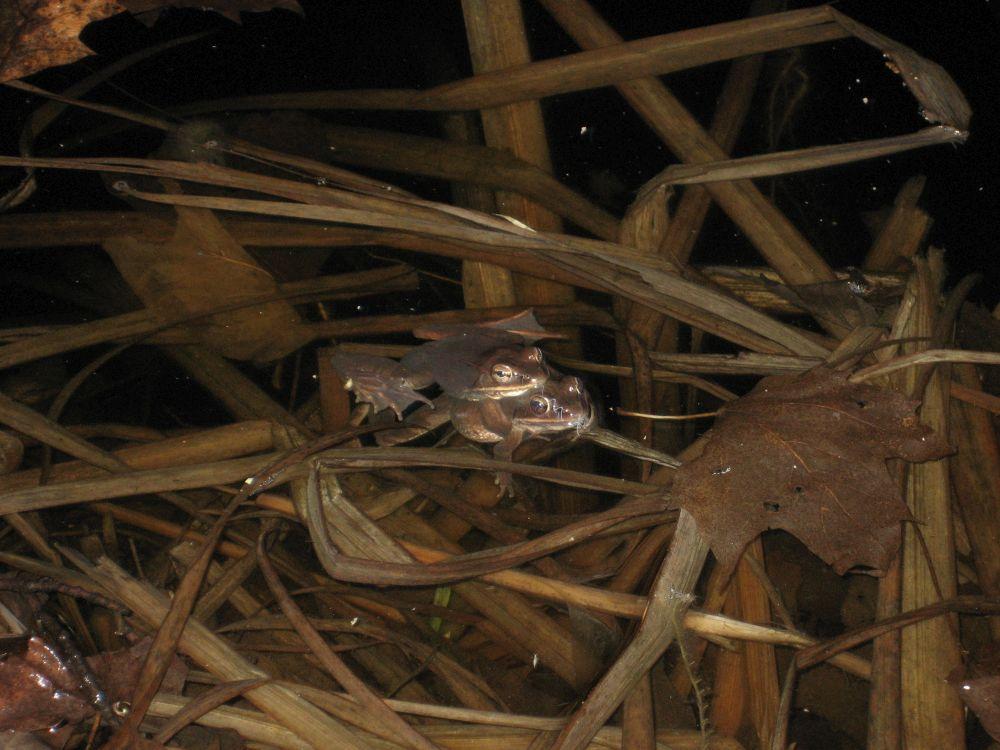
Built in resiliency – different strategies – from embryonic eggs to adult birds or amphibians illustrate the diversity of reproductive strategies found in our own backyards and NH forests. During our current COVID-19 health crisis, health experts recommend we try to get outdoors – walking or hiking near home as we continue ‘social distance’ protocols. Getting outdoors in April – even sitting on the back porch – is an opportunity to listen-in as woods and fields reawaken. Renewal of wildlife activity during the brief and frenzied season of courtship, breeding, nests and eggs provides a natural parable of springtime resurrection.
It’s just the kind of hopeful ‘faith in the future’ that I believe will be particularly welcome this spring. Be kind, stay safe and try to get outdoors this month.
